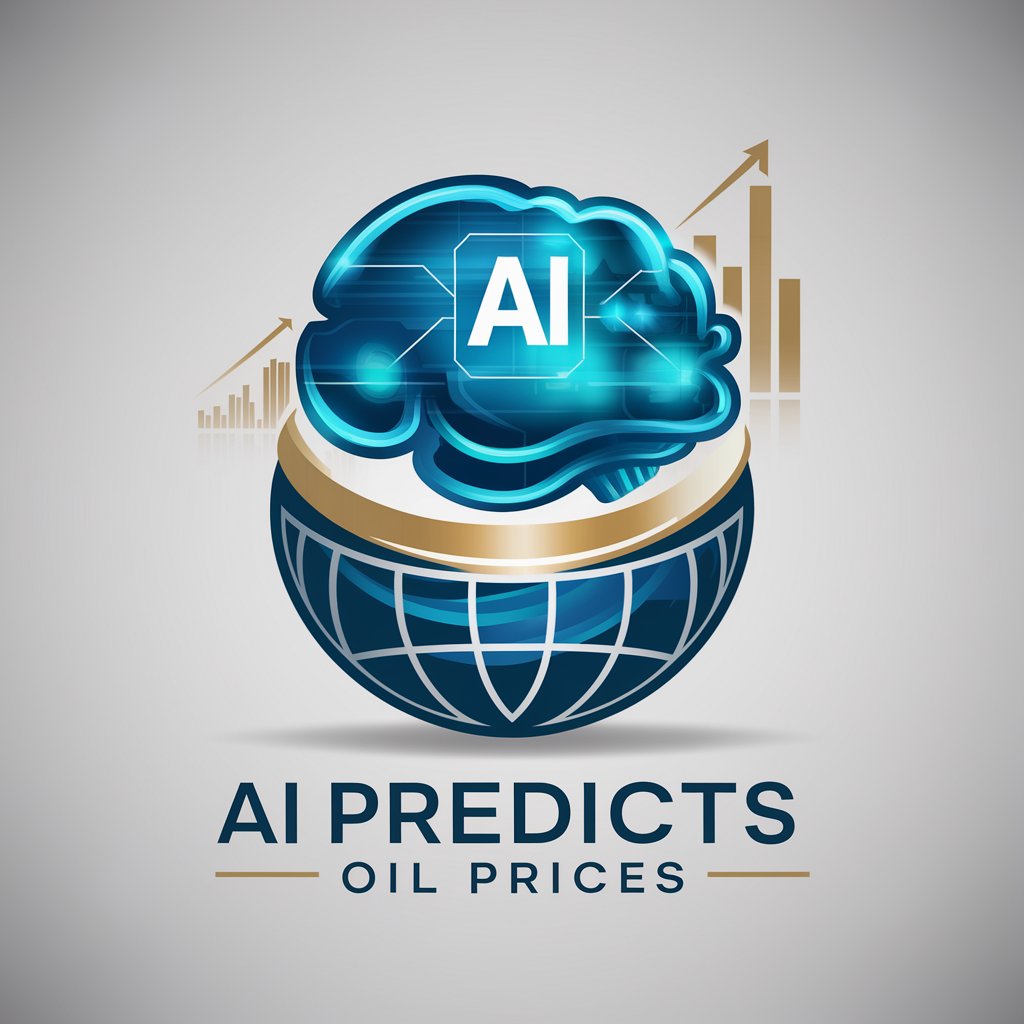AI predicts oil prices - AI-Driven Oil Price Forecasts

Welcome! Let's explore the complexities of global oil price predictions.
Predict oil prices with AI precision
Analyze the impact of recent geopolitical events on global oil prices.
What are the key economic indicators that influence oil prices?
How do historical data trends inform future oil price predictions?
Explain the role of OPEC in determining global oil prices.
Get Embed Code
Overview of AI Predicts Oil Prices
The AI Predicts Oil Prices system is designed with the primary purpose of analyzing and forecasting trends within the oil market, aiming to provide insights into future oil prices. This AI leverages a multifaceted approach that incorporates historical data analysis, current market trends, geopolitical events, and key economic indicators to generate informed predictions. It's developed to assist in navigating the complexities and uncertainties inherent in the oil market, offering a data-driven basis for understanding potential future price movements. For example, the AI might analyze patterns in global supply and demand, consider the impact of geopolitical tensions in oil-rich regions, and factor in potential economic shifts that could affect oil prices. In a scenario where there's an unexpected geopolitical event in a major oil-producing country, the AI would assess historical price reactions to similar events, current supply levels, and market sentiment to predict short-term price movements. Powered by ChatGPT-4o。

Core Functions of AI Predicts Oil Prices
Historical Data Analysis
Example
Analyzing historical price trends and production data to identify patterns that could indicate future movements.
Scenario
For instance, if historical data shows that oil prices tend to rise during certain months due to seasonal demand increases, the AI can forecast similar trends for upcoming periods.
Market Sentiment Analysis
Example
Evaluating news articles, reports, and social media to gauge market sentiment and its potential impact on oil prices.
Scenario
In a situation where there's widespread speculation about a potential reduction in oil production, the AI assesses sentiment to predict how this speculation might influence market behavior.
Geopolitical Risk Assessment
Example
Assessing the impact of geopolitical events on oil supply and prices, including conflicts, sanctions, and diplomatic agreements.
Scenario
When a major oil-producing country faces political instability, the AI evaluates how this might affect oil supply and prices, based on historical precedents and current market conditions.
Economic Indicator Analysis
Example
Analyzing global economic indicators such as GDP growth rates, currency fluctuations, and trade balances to predict their impact on oil demand and prices.
Scenario
If there's an unexpected downturn in major economies, the AI analyzes how reduced industrial activity and consumption might lead to lower oil demand and prices.
Target User Groups for AI Predicts Oil Prices
Energy Sector Analysts
Professionals engaged in analyzing market trends, production data, and geopolitical events to make informed decisions about investments, production planning, and market strategies. They would benefit from the AI's comprehensive analysis and predictions to refine their market forecasts and strategic recommendations.
Investors and Traders
Individuals and institutions involved in trading or investing in oil futures, stocks of oil companies, or energy sector ETFs. These users can leverage the AI's insights to inform their trading strategies, hedge risks, and identify potential investment opportunities based on predicted market movements.
Policy Makers and Government Agencies
Officials responsible for developing energy policies, managing national strategic reserves, or negotiating international trade agreements related to oil. Access to accurate predictions and market analyses would assist in making informed policy decisions, ensuring energy security, and effectively engaging in international diplomacy.

How to Use AI Predicts Oil Prices
1. Start with a Trial
Begin by visiting yeschat.ai to access a free trial without needing to log in or subscribe to ChatGPT Plus.
2. Input Data
Provide relevant data including historical oil prices, production levels, geopolitical events, and any other pertinent information.
3. Analyze Predictions
Use the AI's output to analyze market trends and predictions for future oil prices.
4. Continuous Learning
Regularly update the AI with new data to refine predictions and increase accuracy over time.
5. Application of Insights
Apply the AI-generated insights in strategic planning, investment decision-making, or academic research.
Try other advanced and practical GPTs
Great Grandparents 1100-1200 AD🕰️🌍
Reviving medieval wisdom with AI

Time Travel GPT
Explore History with AI-Powered Insights

By Social Media Asistant
Elevate Your Social Presence with AI-Powered Creativity

CD Cover Creator
Crafting Visual Music Stories, AI-Enhanced

Karsten Wysk
Empowering Inquiry with AI Intelligence

Northstar Wiki
Empower your Titanfall 2 modding journey.

Dungeon Master GPT
Your AI-powered Dungeon Master

Creador de Portadas
Empower your story with AI-designed covers

Travel Buddy
AI-Powered Personal Travel Assistant

! Virtual Voyager !
Explore the world with AI-powered insights.

Emergency GPT
Instant AI-Powered Emergency Advice

Image Genaration Prompter
Transform ideas into visuals with AI.

FAQs on AI Predicts Oil Prices
What data does the AI use to predict oil prices?
The AI analyzes a variety of data including historical price trends, supply and demand dynamics, geopolitical factors, economic indicators, and market sentiment to predict oil prices.
How accurate are AI oil price predictions?
While AI predictions offer valuable insights based on data analysis, accuracy can vary due to the unpredictable nature of the market and unforeseen global events. Continuous data input and model refinement can improve accuracy over time.
Can the AI predict short-term and long-term oil prices?
Yes, the AI can make both short-term and long-term predictions by analyzing different data sets and adjusting its models to focus on immediate or future trends.
How can investors use AI for oil price predictions?
Investors can use AI-generated insights to inform their investment strategies, manage risks, and identify potential opportunities in the oil market.
What makes AI predictions for oil prices unique?
AI predictions are unique because they can process and analyze vast amounts of complex data at speed, identify patterns and trends that may not be immediately obvious, and continuously learn and adapt to new information.
